Thomson VS 660 Manual
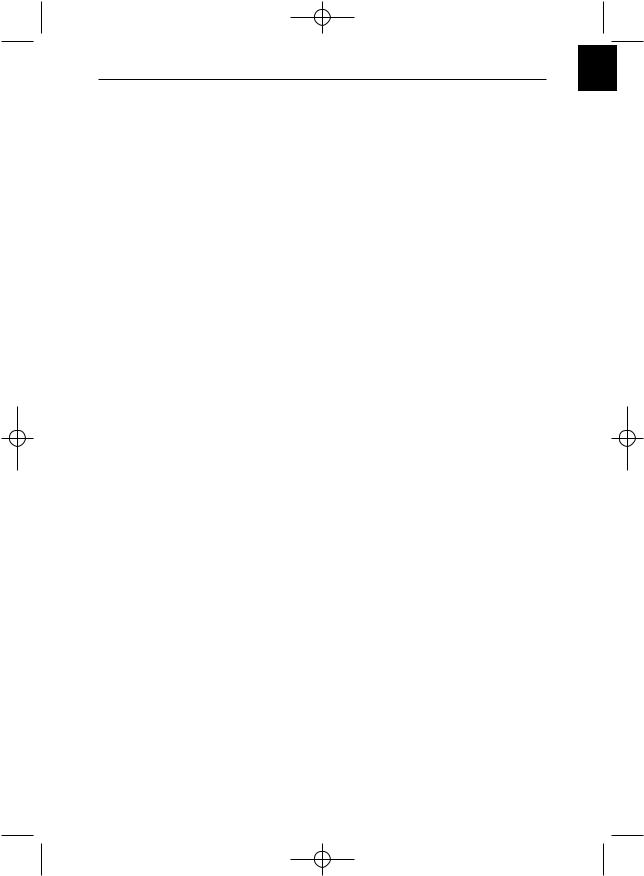
VS660 - 5 langues 17/04/03 11:38 Page 1
EN
Wireless video transmitter
Precautions
• Safety
This equipment contains heat sensitive components. Maximum ambient temperature must not exceed 35° Celsius.
Humidity in rooms where this equipment is situated must not exceed a hygrometric level of 85 %. If you have to use your equipment outside, avoid exposing it to rain water or to splashes. The transition from a cold environment to a hot one may cause condensation. Allow it to dry by itself before re-starting the equipment.
In the event of prolonged absence, switch off the equipment by means of the on/off switch. Even when switched off, certain components remain live. In order to insulate it completely you must remove the plug from the main electricity supply.
In the event of an electrical storm, it is advisable to disconnect the equipment from the electricity supply so as to avoid potentially damaging electrical or electromagnetic surges. To this end, make sure that the mains plug is easily accessible for disconnection.
Disconnect the equipment immediately if you detect a smell of burning or smoke. Under no circumstances must you open the equipment yourself; you run the risk of electrocution.
• Maintenance
Clean the equipment with a soft cloth and a neutral detergent. The use of solvents, abrasive products or alcohol-based products is likely to damage the equipment.
• Regulations
This equipment must only be installed inside. Its use is restricted to private radio transmission. Connection to a public or independent network, or to an outside aerial is prohibited.
Under no circumstances should this appliance be put to industrial use. It is designed solely for domestic operation.
THOMSON disclaims all responsibility in the event of use that does not comply with the present instructions.
1
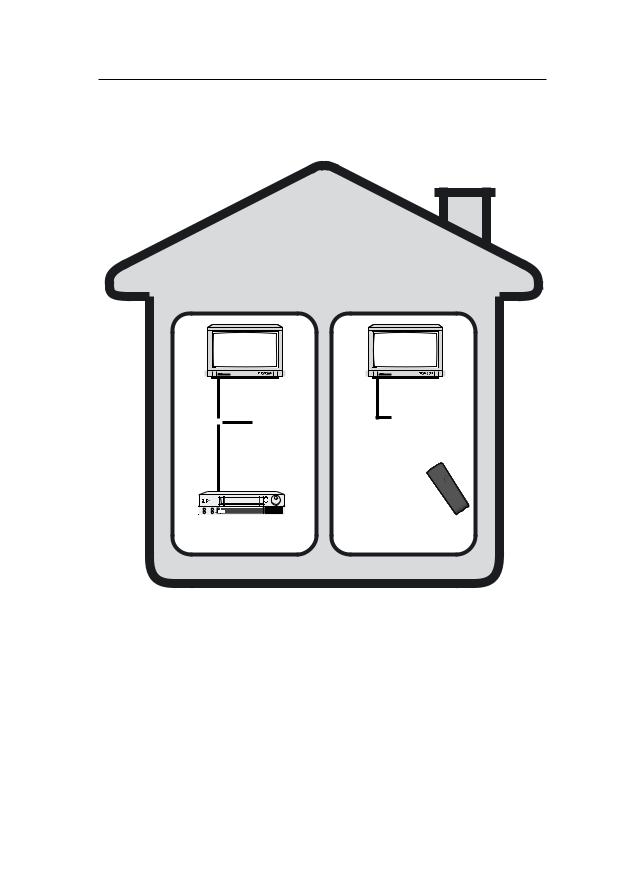
VS660 - 5 langues 17/04/03 11:38 Page 2
Principles of operation
LIVING ROOM |
BEDROOM |
 Transmitter
Transmitter
Video recorder,
satellite receiver,...
Receiver
Remote control 
 for video recorder,
for video recorder,  satellite receiver,…or
satellite receiver,…or
universal remote control.
Technical characteristics
VS 660 : 4 channels (A : 2.411 GHz - B : 2.434 GHz - C : 2.454 GHz - D : 2.473 GHz) VS 660 U : 4 channels (A : 2.411 GHz - B : 2.434 GHz - C : 2.454 GHz - D : 2.473 GHz) VS 660 SP : 3 channels (A : 2.421 GHz - B : 2.449 GHz - C : 2.477 GHz)
Remote control return: 433,92 MHz
Transmitter power: 10 mW
2
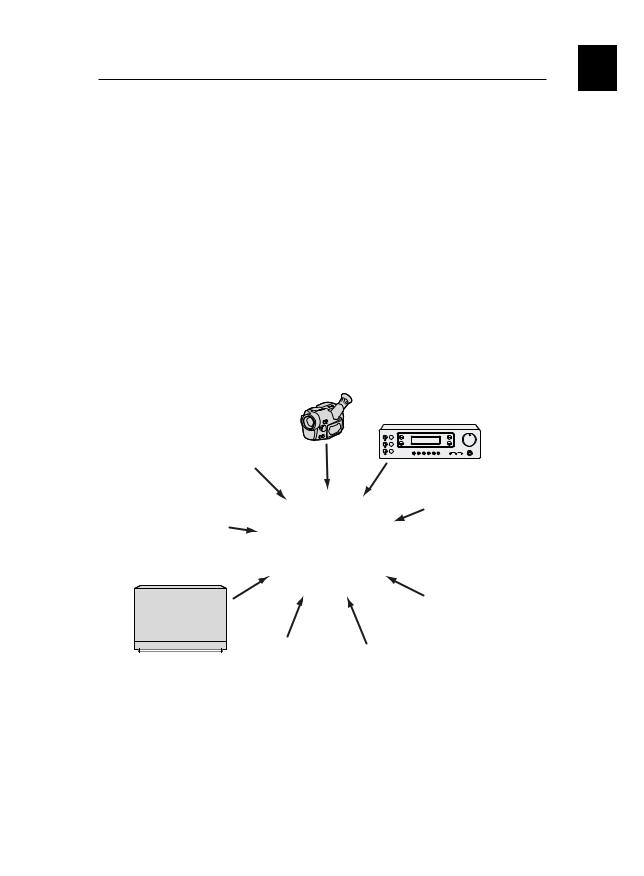
VS660 - 5 langues 17/04/03 11:38 Page 3
EN
What is this equipment for?
The Video Sender VS 660 permits the relay of an Audio-Video signal from your main set-up to a second television set located in another room and equipped with a scart connection (or RCA/Cinch). The main set-up is the place in which you have chosen to install the majority of your equipment (television set, video recorder, satellite receiver, DVD player,..) you can operate the units from the room with the second television set by using their remote controls, or with a universal remote control.
You can play and hear music if you connect the transmitter to a suitable outlet (AUDIO OUT), and the receiver to an amplifier (AUDIO IN) placed in another room. In that case, you will need to get a SCART/Cinch adapter (not supplied).
If you already have a Thomson plasma screen monitor or video projector, the Video Sender will ease your placing of these items where you most want them to be, thanks to eliminating all problems related to long cable runs.
Camcorder
A/V Amplifier
Video recorder
Video disc player
Television set
DVD player
Plasma screen monitor
Satellite/Cable receiver |
Video projector |
and decoder |
|
3
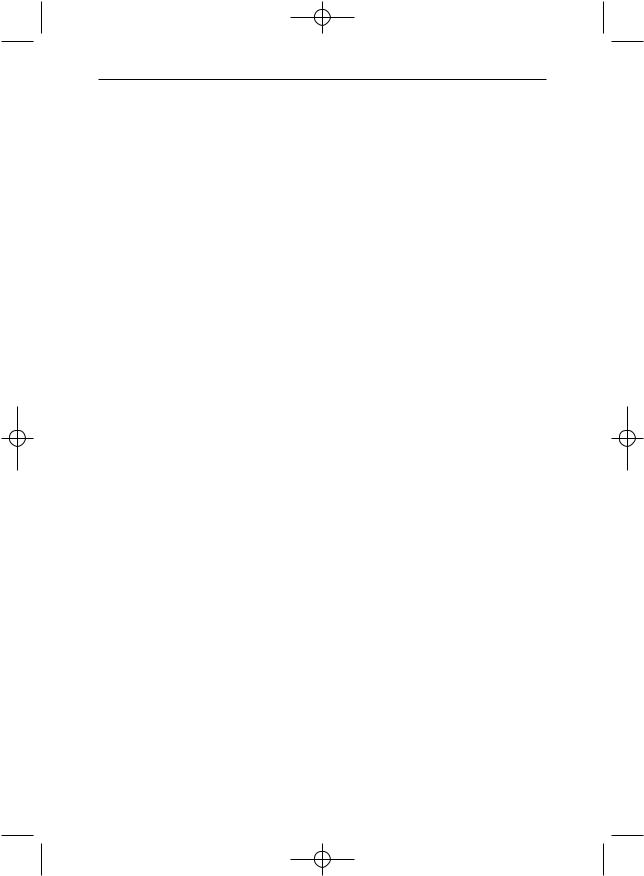
VS660 - 5 langues 17/04/03 11:38 Page 4
Installation of transmitter
The connection setup depends on the devices you have. Here is an example of how to connect the transmitter in a setup comprising a television set and another device (DVD player).
Follow the instructions below and the diagram opposite.
Also refer to the operating diagram printed on the inside cover of this manual.
1. Place the transmitter (1) near the device (video recorder, DVD player, etc.) from which you wish to transmit pictures and sound and connect it using the mini DIN cord and extension box (2 A and 2 B). Connect the SCART cable (2 C) to socket I of the entension box and to socket AV1 of TV.
With a SCART cable (not supplied), connect the TV set to the extension box (socket 2) already connected to the video recorder or DVD player. The red light on the extension box indicates that the transmitter is turned on.
2. Carefully extend the antenna of the transmitter (1) and orient it towards the room where your second TV set (TV2) is located. Turn on (position ON) the transmitter and receiver, using the ON/OFF switch located on its lower side. Place the channel selectors of the transmitter and the receiver on the same channel (same letter).
3. Fit the mains supply lead (3) to the transmitter and plug it into a 220/240 V ~ 50 Hz mains power supply.
4. Fit the lead (4) following these stages:
-connect the jack plug to the IR EXTEND socket,
-unwind the lead and place one cell near the infrared window of the unit to be operated (video recorder or other),
-after installing the receiver (see Pages 6 and 7), ask someone to use the remote control of that equipment item to be controlled from the room where the second (TV2) is located,
-by moving the cell around in front of the unit to be operated you will find the location that permits its control from the other room. You must fix the cell in that position. Usually, this will be a more or less large, transparent area located on the front of the unit.
5. Remove the protective self-adhesive film from the infrared cell of cord (4) and affix it to the infrared-sensitive panel of the equipment to be remote controlled. The cordon has 3 cells in order to let you play video and audio from 3 equipment items connected to the (TV1) set (see Diagram on Page 10).
4
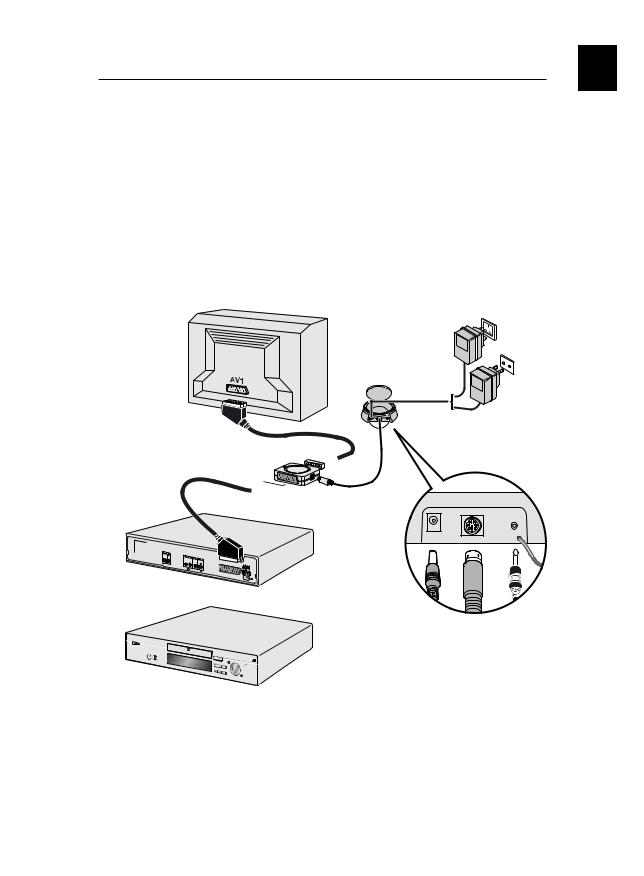
VS660 - 5 langues 17/04/03 11:38 Page 5
EN
TV2
220/240V ~ 50 Hz
VS 660 U
VS 660
VS 660 SP
1 



 2
2
2 A B C
DC 12V |
IR EXTEND |
5
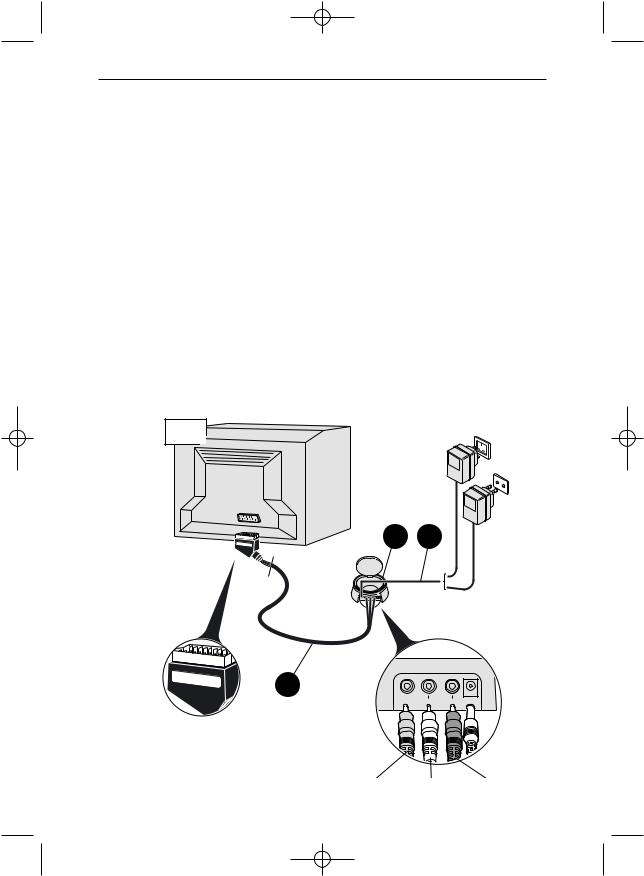
VS660 - 5 langues 17/04/03 11:38 Page 6
Installation of receiver
1. Place the receiver (5) on, or near, the second television set.
2. Connect the receiver (5) to the second television set using the lead (6) following the same instructions as for the transmitter.
3. Extend the antenna on the receiver (5) and orient it toward the main TV set (TV1).
4. Fit the mains supply lead (7) to the receiver and plug it into a 220/240 V ~ 50 Hz mains power supply.
!THE ANTENNA allows you to transmit and receive audio and video signals over a maximum range of 30 meters in free air environments. Inside a typical lodgment the range will be less because of signal attenuation by building material absorption.
!THE FLEXIBLE ANTENNA permits the control of the unit whose pictures you wish to see in the room containing the second television set (TV2).
!THE POWER SUPPLY plug fitted to the transmitter (1) is not the same as the one fitted to the receiver (7).
TV2 |
220/240V ~ 50 Hz
VS 660 U
VS 660
VS 660 SP
5 7
Receiver
Receiver
6
VIDEO OUT |
L AUDIO OUTR |
DC 12V |
YELLOW WHITE RED
6
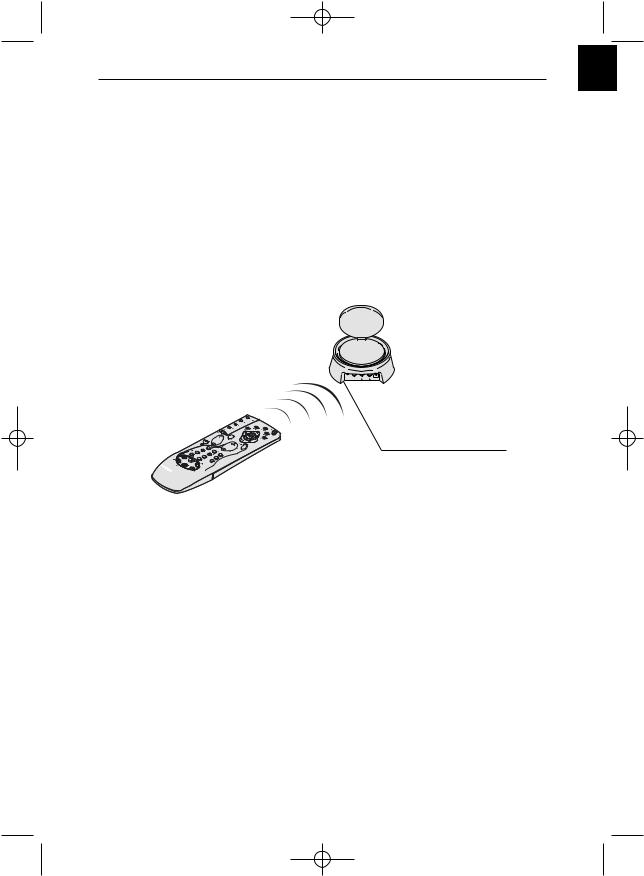
VS660 - 5 langues 17/04/03 11:38 Page 7
EN
Instructions for use
1. Switch on the transmitter (1) and the receiver (5) by switching their ON/OFF buttons to the ON position.
2.Make sure that the transmitter and the receiver are set to the same channel by checking the position of the selectors located under the casing. They must be set to the same channel (same letter).
3. Switch on your equipment (television sets, video recorders ...) in both rooms.
4. Using the remote control of the unit whose pictures you wish to see, and from the room containing the second television set (TV2), select the channels or video functions (or others) according to the unit you are controlling.
Receiver
LEFT RIGHT
IR OUT VIDEO IN |
AUDIO IN |
DC 12V |
Make sure that you point the remote control directly at the receiver’s (5) infrared window.
Special operating details:
No picture on TV2? If you fail to obtain the desired picture on the second television set TV2, select the AV socket, to which the receiver (5) is connected, using the television’s remote control.
Using a decoder (in France: Canal +, TPS, etc.) on your TV2? To have clear images on your second TV set (TV2), output from the decoder must pass through a VCR player, placed in (AV2) mode or set to the channel number assigned for the encrypted TV channel.
Use of a monitor? If your second television set does not have a connection for an outside aerial (terrestrial reception), or if it is a monitor, you will be able to see the channels in the room containing the second television set by selecting those of the video recorder with its remote control.
The picture is scrambled? The running of certain equipment (micro-wave ovens, digital telephone DECT, un-shielded acoustic loudspeakers, etc ...) may interfere with signal transmission. Ensure that they are kept away from the transmitter and the receiver or switch them off.
7
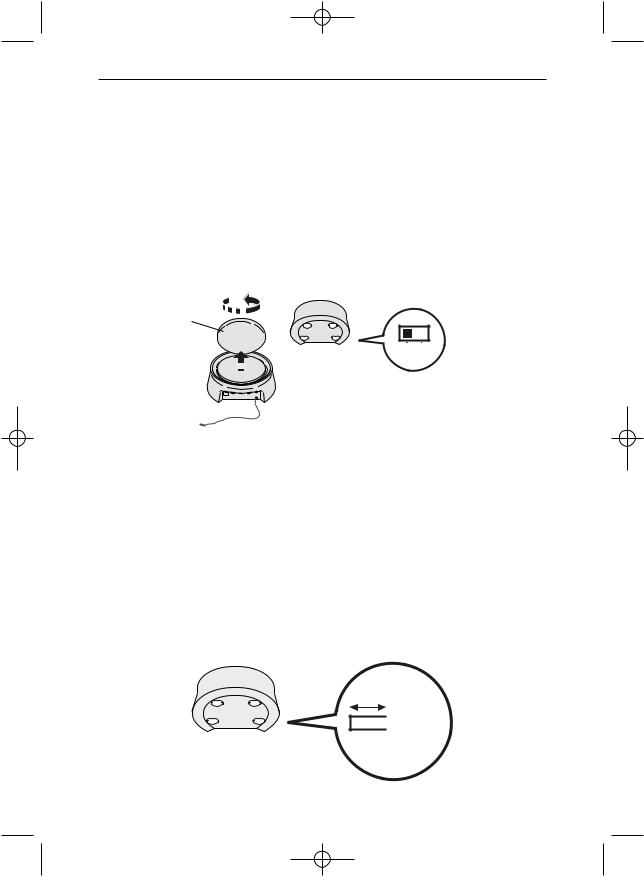
VS660 - 5 langues 17/04/03 11:38 Page 8
Improvement of picture and sound
You will obtain optimal service operation of your Video Sender by correctly orienting the antennae (A). However, reflected signals or other signal degrading factors can affect good quality signal transmission. In this case, readjust antennae positions or slightly move the transmitter or receiver until you get crystal clear reception.
Transmitter / Receiver
(A)
ON OFF
R |
L |
VIDEO IN IR EXTEND |
DC 12V |
AUDIO IN |
|
If no picture is obtained,
check that the transmitter and the receiver have not been installed in the reverse order (each unit corresponds either to the input or to the output of the Audio-Video signal). Check that they have been properly connected and that they are switched on (ON position). Ensure that the channel selector is set to the same letter on both units.
If transmission is blurred or scrambled,
choose another channel but make sure that it is identical on both units.
Transmitter / Receiver

 a, b, c, d
a, b, c, d
8

VS660 - 5 langues 17/04/03 11:38 Page 9
EN
Diffusion des images de plusieurs appareils
If you have several equipment items (VCR player, satellite receiver, DVD player, etc.) in your main equipment room and want to transmit and receive audio and video signals to a second TV set, connect your equipment items as shown in the Diagrams on following pages. Usually, the units are connected in series, the last unit having a free scart connection that you can use for the connection of the transmitter.
Connect the devices you use the most (Group 1) to socket 1 of the extension box (2A). This is the default live socket for transmission to the second TV set.
Operation
In addition to the instructions given on pages 7 and 8, it is essential that you switch off all unused equipment (put them on standby).
For group 2 equipment, you have to use socket 2 of the extension box from the receiver (by pressing button 1/2) or by pressing one of the keys on the remote control of one the units (in this case the VCR or DVD player) for more than 8 seconds.
The remote control must be aimed at the infrared window on the receiver.
!As a general rule, remember to switch off units not in use. Also, refer to the manufacturers’ instructions to see if there are any particularities regarding connection or use. Certain units may need to have their input scart connection “programmed”.
!In all cases the transmitter must be connected to a scart connection that produces an AudioVideo signal Out. Refer to the manufacturer’s instructions for confirmation of this.
!These diagrams show a few connection possibilities whose operation depends on the devices you have, their sockets and the signals they deliver. There are therefore other connection setups that you may need to try if the setup shown does not meet your requirements. In that case, ask your reseller for assistance or contact our customer service (Helpline).
You can contact THOMSON by dialing: 0845 601 3093 (For Great-Britain, all calls will be charged at local rate)
www.thomson-europe.com
9
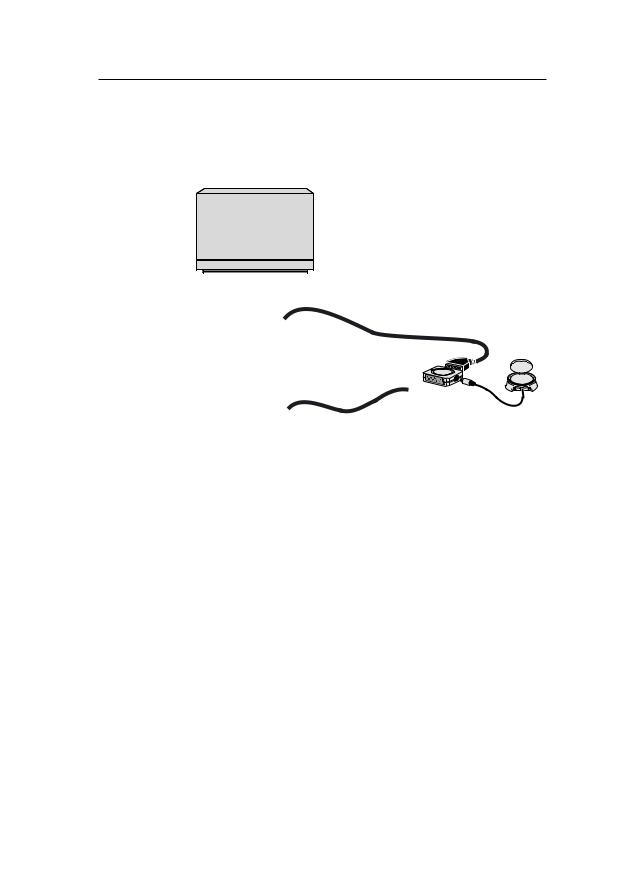
VS660 - 5 langues 17/04/03 11:38 Page 10
General information on connections...
GROUP 1 |
TV1 |
TV |
AUX/VCR |
|
1 |
Satellite/Cable Receiver/Decoder |
|
GROUP 2 |
2 |
|
TV |
Extension |
Transmitter |
|
box |
Video recorder
Unit on
|
Pictures you will be able to see on |
|||||
|
|
|
|
|
|
|
|
|
TV1 |
|
TV2 |
||
|
|
|
|
|
|
|
|
VCR |
|
SAT |
VCR |
|
SAT |
Video Recorder (VCR) |
|
|
|
|
|
|
|
|
|
|
|
|
|
Satellite/Cable Receiver/Decoder (SAT) |
|
|
|
|
|
|
|
|
|
|
|
|
|
|
|
|
|
|
|
|
Only one device per group is available for the transmission and/or viewing of the pictures on TV1 or TV2. Images from the satellite receiver or cable can be recorded with the video recorder.
10
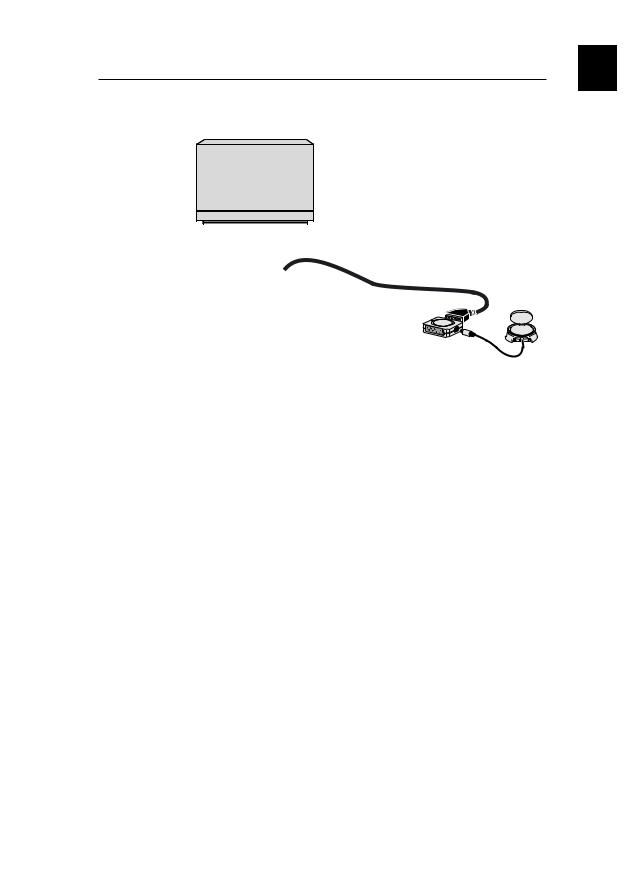
VS660 - 5 langues 17/04/03 11:38 Page 11
EN
GROUP 1 |
TV1 |
TV |
AUX/VCR |
|
1 |
Satellite/Cable Receiver/Decoder |
|
GROUP 2 |
2 |
|
TV |
Extension |
Transmitter |
|
box |
DVD player
Unit on
|
Pictures you will be able to see on |
|||||
|
|
|
|
|
|
|
|
|
TV1 |
|
TV2 |
||
|
|
|
|
|
|
|
|
DVD |
|
SAT |
DVD |
|
SAT |
DVD player |
|
|
|
|
|
|
|
|
|
|
|
|
|
Satellite/Cable Receiver/Decoder (SAT) |
|
|
|
|
|
|
|
|
|
|
|
|
|
|
|
|
|
|
|
|
Only one device per group is available for the transmission and/or viewing of the pictures on TV1 or TV2.
11
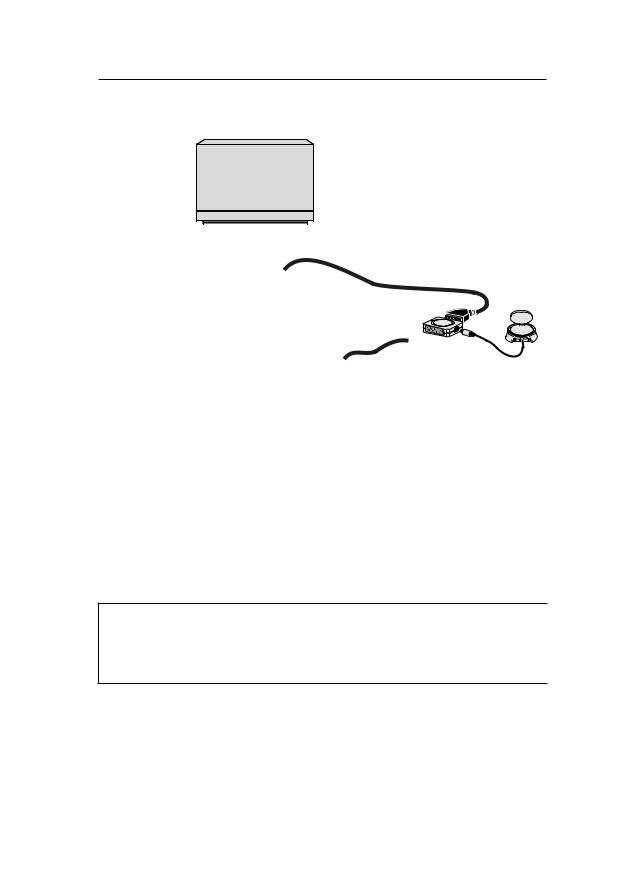
VS660 - 5 langues 17/04/03 11:38 Page 12
GROUP 1 |
TV1 |
TV |
AUX/VCR |
|
|
|
|
Satellite/Cable Receiver/Decoder |
|
1 |
|
||
|
|
|
|||
GROUP 2 |
|
|
2 |
|
|
TV |
TV |
AUX |
Extension |
Transmitter |
|
box |
|||||
|
|
|
|||
DVD player |
Video recorder |
|
|
||
Unit on
|
|
|
Pictures you will be able to see on |
|
|||||
|
|
|
|
|
|
|
|
|
|
|
|
|
TV1 |
|
|
|
TV2 |
|
|
|
|
|
|
|
|
|
|
|
|
|
VCR or |
SAT |
DVD |
VCR or |
SAT |
|
DVD |
||
|
|
|
|
|
|
|
|
|
|
Video recorder |
|
|
|
|
|
|
|
|
|
|
|
|
|
|
|
|
|
|
|
|
|
|
|
|
|
|
|
|
|
Satellite Decoder |
|
|
|
|
|
|
|
|
|
or |
|
|
|
|
|
||||
Satellite Demodulator |
|
|
|
|
|
||||
DVD player |
|
|
|
|
|
|
|
|
|
|
|
|
|
|
|
|
|
|
|
|
|
|
|
|
|
|
|
|
|
Only one device per group is available for the transmission and/or viewing of the pictures on TV1 or TV2. Images from the satellite receiver or cable can be recorded with the video recorder.
To view/record the pictures transmitted by a DVD player, the other connected devices must support and retransmit RGB signals on their SCART sockets.
12
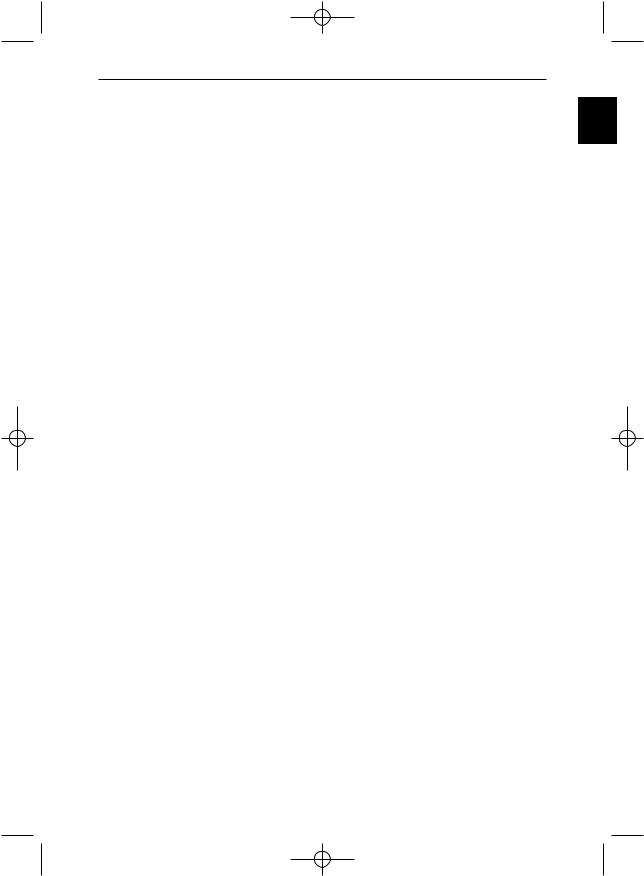
VS660 - 5 langues 17/04/03 11:38 Page 1
Transmetteur vidéo sans fil
Précautions
• Sécurité
Les composants de cet appareil sont sensibles à la chaleur. La température maximale ambiante ne doit pas dépasser 35° Celsius.
L’humidité des locaux où est placé l’appareil ne doit pas dépasser un taux hygrométrique de 85 %. Evitez de l’exposer à l’eau de pluie ou aux éclaboussures. Le passage d’une atmosphère froide à une ambiance chaude peut provoquer de la condensation. Laissez-la disparaître d’elle-même avant de remettre l’appareil en marche.
En cas d’absence prolongée, éteignez l’appareil avec l’interrupteur marche/arrêt. Même à l’arrêt, certains composants restent en contact avec le réseau électrique. Pour l’isoler complètement vous devez débrancher la fiche d’alimentation de la prise secteur.
En cas d’orage, il est recommandé d’isoler l’appareil du réseau électrique afin de ne pas le soumettre à des surcharges électriques ou électromagnétiques qui peuvent l’endommager. A cette fin, laissez la fiche secteur accessible pour le débrancher.
Débranchez immédiatement l’appareil si vous constatez qu’il dégage une odeur de brûlé ou de la fumée. En aucun cas vous ne devez ouvrir l’appareil vous-même, vous risquez l’électrocution.
• Entretien
Nettoyez l’appareil avec un chiffon doux et un détergent neutre. L’utilisation de solvants, de produits abrasifs ou de produits à base d’alcool risque d’endommager l’appareil.
• Réglementation
Cet appareil ne doit être installé qu'à l'intérieur d'un local. Son utilisation est restreinte aux transmissions radioélectriques privées. Le branchement à un réseau public ou indépendant ou à une antenne extérieure est interdit.
Cet appareil ne doit en aucun cas être utilisé à des fins commerciales. Il est uniquement prévu pour un usage domestique.
THOMSON multimedia dégage sa responsabilité en cas d’utilisation non conforme aux indications de cette notice.
FR
1
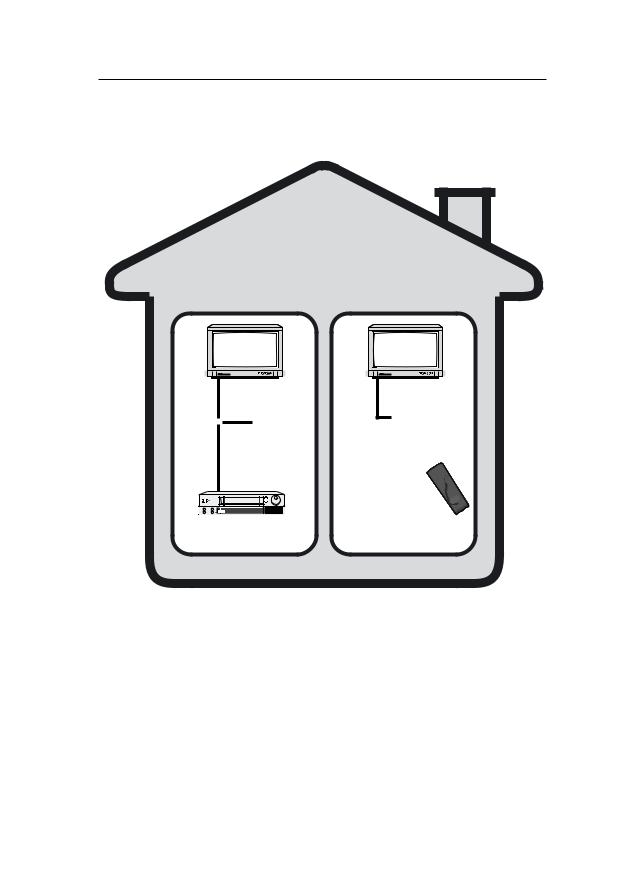
VS660 - 5 langues 17/04/03 11:38 Page 2
Principes de fonctionnement
SALON CHAMBRE
Transmitter |
Receiver |
(Emetteur) |
(Récepteur) |
|
Télécommande |
Magnétoscope, |
du magnétoscope, |
récepteur satellite... ou |
|
Récepteur satellite, ... |
télécommande universelle. |
Caractéristiques techniques
VS 660 : 4 canaux (A : 2.411 GHz - B : 2.434 GHz - C : 2.454 GHz - D : 2.473 GHz) VS 660 U : 4 canaux (A : 2.411 GHz - B : 2.434 GHz - C : 2.454 GHz - D : 2.473 GHz) VS 660 SP : 3 canaux (A : 2.421 GHz - B : 2.449 GHz - C : 2.477 GHz)
Retour télécommande : 433,92 MHz
Puissance de l’émetteur : 10 mW
2
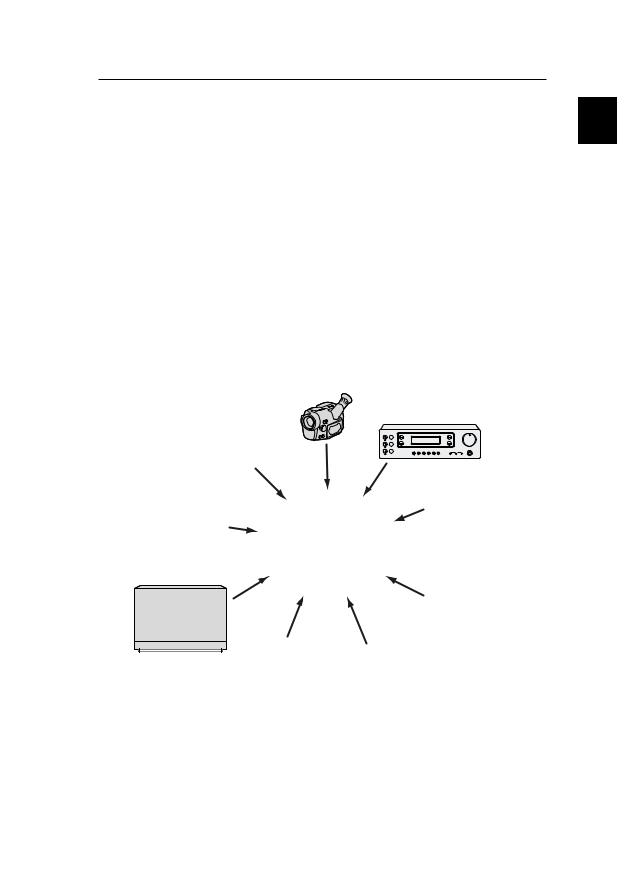
VS660 - 5 langues 17/04/03 11:38 Page 3
A quoi sert cet appareil ?
Le Video Sender VS 660 permet de diffuser un signal Audio-Video à partir de votre installation principale vers un second téléviseur installé dans une autre pièce et équipé d’une prise péritélévision. L’installation principale est l’endroit où vous avez regroupé la plupart de vos appareils (téléviseur, magnétoscope, récepteur satellite, lecteur DVD, ...). Vous pourrez commander les appareils depuis la pièce où se trouve le second téléviseur à l’aide de leurs télécommandes, ou avec une télécommande universelle.
La diffusion de musique est possible si vous raccordez l’émetteur à une source (AUDIO OUT) et le récepteur à un amplificateur (AUDIO IN) dans une autre pièce. Dans ce cas vous devrez vous procurer un adaptateur SCART/Cinch (non fourni).
Si vous possédez un moniteur plasma ou un projecteur vidéo Thomson, le Video Sender vous facilitera leur implantation à l’endroit désiré grâce à l’élimination des problèmes liés à la longueur des câbles de connexions.
Camescope
Amplificateur A/V
Magnétoscope
DVD
Lecteur Video-disc
Moniteur plasma
TV
Récepteur et décodeur |
Vidéo projecteur |
Satellite/Câble |
|
FR
3
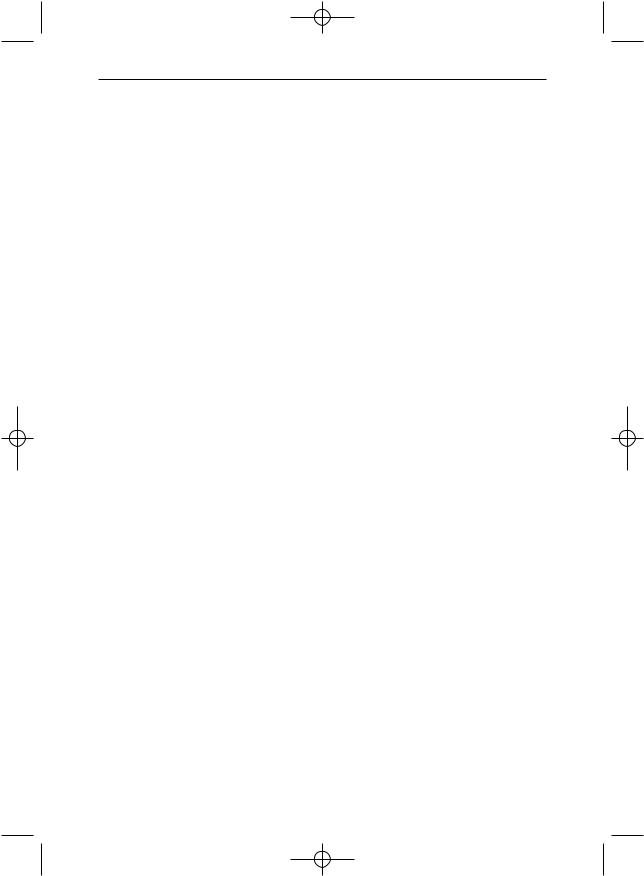
VS660 - 5 langues 17/04/03 11:38 Page 4
Installation de l’émetteur
Le schéma de branchement dépend des appareils que vous possédez. Nous vous proposons ici un exemple de branchement de l’émetteur dans une installation comprenant un téléviseur et un autre appareil (lecteur DVD).
Suivez les indications ci-dessous et le schéma ci-contre.
Reportez-vous également au schéma de principe imprimé dans la couverture de cette notice.
1. Placez l’émetteur (1) à proximité de l’appareil (magnétoscope, lecteur DVD…) dont vous souhaitez diffuser les images et le son et raccordez-le à l’aide du cordon mini DIN et du boîtier d’extension (2 A et 2 B). Raccordez le cordon SCART-Péritélévision (2 C) à la prise 1 du boîtier d’extension et à la prise AV1 du téléviseur.
Avec un cordon SCART-Péritélévision (non fourni), raccordez le téléviseur au boîtier d’extension (prise 2) déjà branché au magnétoscope ou lecteur DVD. Le voyant rouge du boîtier d’extension indique que l’émetteur est sous-tension.
2. Déployez l’antenne de l’émetteur (1) avec précaution et orientez-la en direction de la pièce du second téléviseur (TV2). Mettez en marche (position ON) l’émetteur et le récepteur à l’aide du bouton ON/OFF situé en dessous et sur le coté. Placez le sélecteur de canal de l’émetteur et du récepteur sur la même position (même lettre).
3. Branchez l’alimentation secteur (3) à l’émetteur et à une prise secteur 220/240V ~ 50 Hz.
4. Installez le cordon (4) en suivant ces étapes :
-raccordez la fiche jack dans la prise IR EXTEND,
-déroulez le cordon et placez une cellule à proximité de la fenêtre infrarouge de l'appareil à commander,
-après l’installation du récepteur (voir page 6 et 7), demandez à une personne d'utiliser la télécommande de l'appareil à commander depuis la pièce où se trouve le second téléviseur (TV2),
-en déplaçant la cellule devant l'appareil à commander vous pourrez déterminer l'emplacement qui permet sa commande depuis l'autre pièce. Vous devrez y coller la cellule. Généralement il s'agit d'une zone transparente plus ou moins grande située en façade.
5. Enlevez le papier de protection de la partie auto-collante de la cellule infrarouge du cordon (4) et collez-la sur la fenêtre infrarouge de l’appareil à télécommander. Le cordon est équipé de 3 cellules afin de vous permettre de diffuser les images et le son de 3 appareils connectés au téléviseur (TV1) (voir schéma de la page 10).
4
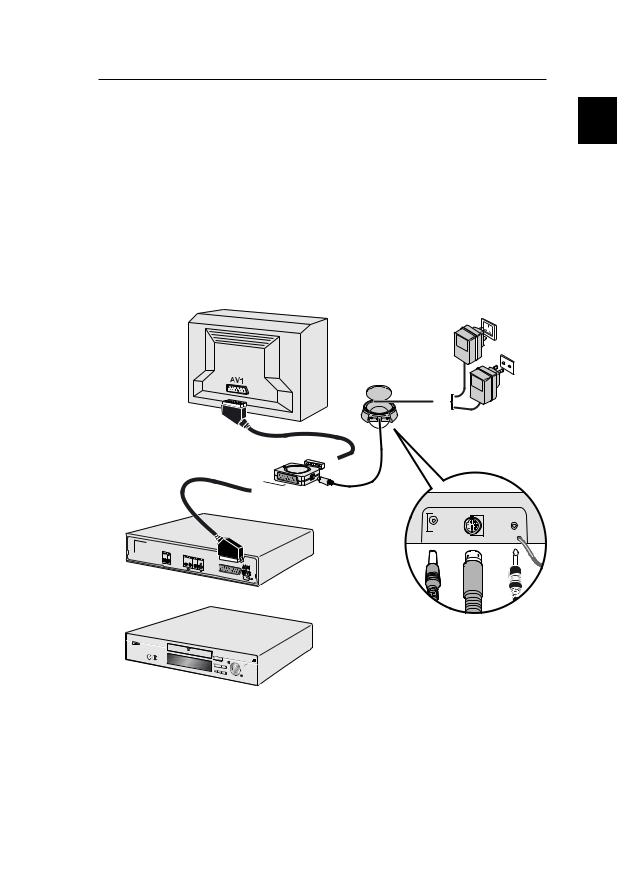
VS660 - 5 langues 17/04/03 11:38 Page 5
TV2
FR
TV1 |
|
220/240V ~ 50 Hz |
|
VS 660 U |
|
|
|
|
1 |
3 |
VS 660 |
|
|
VS 660 SP |
1 



 2
2
2 A B C
DC 12V |
IR EXTEND |
4
5
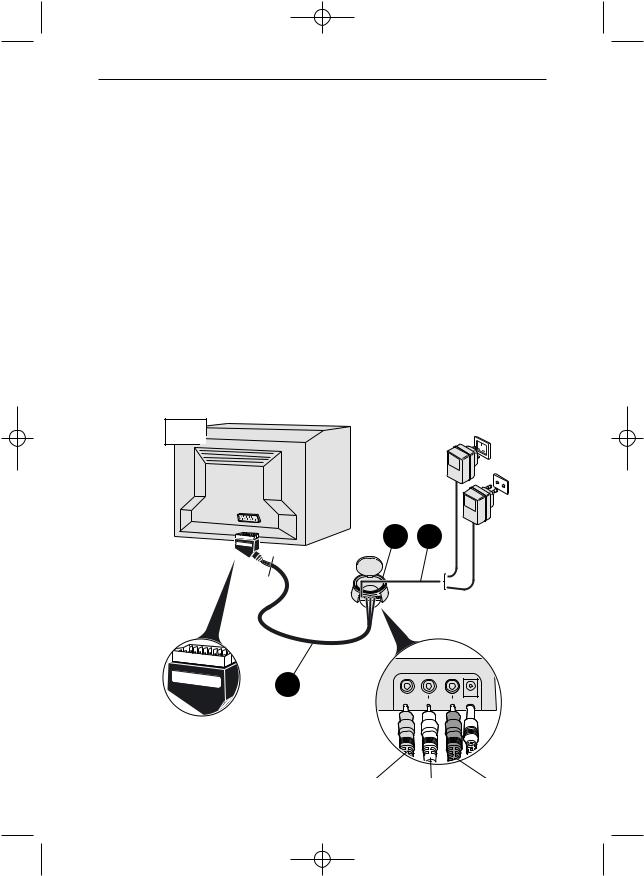
VS660 - 5 langues 17/04/03 11:38 Page 6
Installation du récepteur
1. Placez le récepteur (5) sur, ou à proximité du second téléviseur.
2. Raccordez le récepteur (5) au second téléviseur à l’aide du cordon (6) en suivant les mêmes recommandations que pour l’émetteur.
3. Déployez l’antenne du récepteur (5) et orientez-la en direction du téléviseur principal (TV1).
4. Branchez l’alimentation secteur (7) au récepteur et à une prise secteur 220/240V ~
50Hz.
!L’ANTENNE permet la diffusion du signal Audio-Video sur une portée maximum de 30 mètres en champ libre. A l’intérieur d’une habitation cette portée est inférieure et dépend des matériaux que les ondes auront à franchir.
!L’ANTENNE SOUPLE permet la commande de l’appareil dont vous souhaitez voir les images à partir de la pièce où se trouve le second téléviseur (TV2).
!L’ALIMENTATION de l’émetteur (1) possède une prise différente de celle de l’alimentation du récepteur (7).
TV2 |
220/240V ~ 50 Hz
VS 660 U
VS 660
VS 660 SP
5 7
Receiver
Receiver
6
VIDEO OUT |
L AUDIO OUTR |
DC 12V |
JAUNE BLANC ROUGE
6
